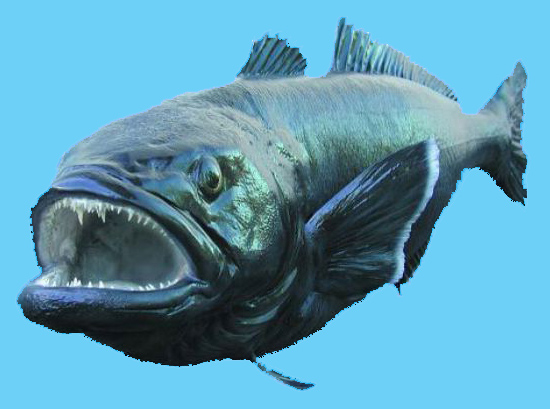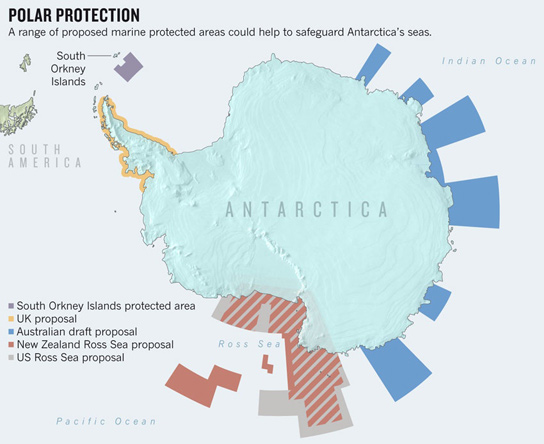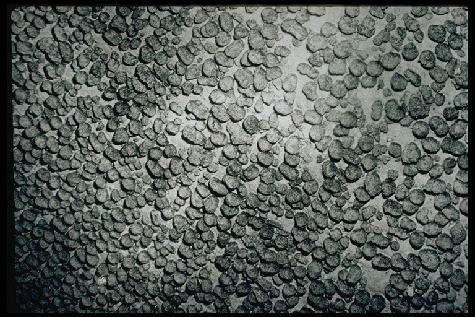It is going to be summer in the Antarctic Ocean in two months and that will bring out the Southern Ocean-based fishing fleets to cast their nets and bait lines into the world’s last refuge for marine wildlife. And not only will nets be cast, those seeking oil, gas, and sub-sea mineral deposits will join the fishing fleets in their pursuit of natural resources that can be exploited at some point in this 21st century.
Who Owns Antarctica and its Resources?
Southern hemisphere countries have laid claim to 75% of the continent led by Argentina, Australia, Chile, France (through its Pacific Polynesian possessions) and the United Kingdom (through the Falkland Islands). The remaining 25% are governed by a United Nations’ sponsored treaty declaring that no nation has a claim to any Antarctic territory or the Southern Ocean that lies off its shores.
Very little of this ocean is designated marine protected. This has led to few restrictions on commercial fishing. That’s why a coalition of 16 environmental groups has launched a campaign this year to try and protect 3.6 million square kilometers of the Ross Sea (see image of Antarctica below). In addition the group has lobbied for 18 more marine reserves to be set aside as fishing restricted.
Who has jurisdiction over decisions about the Southern Ocean surrounding Antarctica. Twenty-four countries not including the European Union all have a say. They have formed the Commission for the Conservation of Antarctic Marine Living Resources (CCAMLR). For these countries the word “conservation” seems to have a different meaning than the one we commonly think of when using that word. Instead of protecting marine wildlife CCAMLR is all about exploiting the resources of the area although defined as in a sustainable way. When you read through the measures taken by CCAMLR, however, the regulations and policies focus on numbers of fishing vessels, type of gear, and documenting catches. Nowhere do words like “species protection,” “environmental protection,” and “biodiversity” appear. Instead we see words like “harvesting,” “unreported catches,” and “unregulated fishing.”

What is Being Caught and What is Not off Antarctica
The Antarctic fishery catches a number of species including Patagonian Toothfish (see picture above), Antarctic Toothfish, mackerel, icefish, krill and a few more. The CCAMLR appointed scientific committee reviews these annual catches (although it is not clear whether the review is biannual or every year based on documents on their website). Reviews are based on reports received from fishing boats and landing ports not actual inspections. The “stated” objective is to gain a better understanding of the marine ecosystem for the purpose of “managing the living resources in a sustainable way.”
CCAMLR has established catch limits for all marine species deemed commercial. Catch limits are based on estimates of the total population of each resource. Counting the catch determines whether catch limits have been reached. The threshold for stopping the fishing of most species is 25% of the estimated level of stock if fishing were banned for a two year period. But without an accurate species survey the number is largely made up.
An International Whaling Commission has created a sanctuary around Antarctica to deter scientific whaling practiced by Japan and Norway, the last two major countries practicing commercial whaling. In the section it claims to have jurisdiction over, Australia has established its own whaling preserve. But whaling for scientific purposes continues to go on. So it seems that policing under current arrangements is insufficient.

CCAMLR also attempts to police polluters by looking at collateral damage to the Southern Ocean and Antarctica’s shorelines from dumping of waste, and the entanglement of marine mammals and birds in discarded plastic. It conducts beach surveys and tries to trace dumping sources. But for the most part the Commission issues guidelines for handling of garbage in the Southern Ocean and on the continent and relies on International Conventions to set standards even though polar oceans are more sensitive to pollutants. And as for plastic waste it has a habit of washing ashore or becoming suspended in ocean water regardless of where it gets dumped.
Antarctica and its Non-Living Resources – the Hunt for Minerals and Energy
According to the Central Intelligence Agency of the United States, World Factbook, Antarctica and the surrounding Southern Ocean contains iron ore, chromium, copper, gold , nickel, platinum, coal and other hydrocarbons. Today, as in the past, it is the harsh extremes that remain the prime inhibitor to any exploitation of potential resources. With much of the continent encased in 4 kilometers of ice and only 0.2% of the land mass actually ice free, current technology cannot achieve much other than limited prospecting and remote sensing.
In 1991 the nations of the world signed the Madrid Protocol, to ban oil prospecting and extraction in Antarctica and the Southern Ocean. But exploitation of mineral resources is not covered in the protocol. With much of Antarctica’s onshore mineral wealth difficult to measure the offshore, therefore, has become the target. And offshore lie manganese nodules.
Manganese seafloor deposits are seen as an important long-term resource for exploitation as the 21st century unfolds. Right now marine research vessels are mapping the ocean floor to discover locations. The first deposits to be exploited will be those easiest to get to, the ones found in tropical waters. But inevitably mining companies will turn to the Antarctic as will oil and gas companies, who will attempt to rollback treaties like the Madrid Protocol. It is only a matter of time. The impact on marine seafloor life of harvesting deep sea manganese nodules remains unknown but you can guess it will be as massively disruptive as drag nets have been to seafloors throughout the world. And even more problematic would be a blowout or environmental disaster associated with an oil or gas drilling rig.















